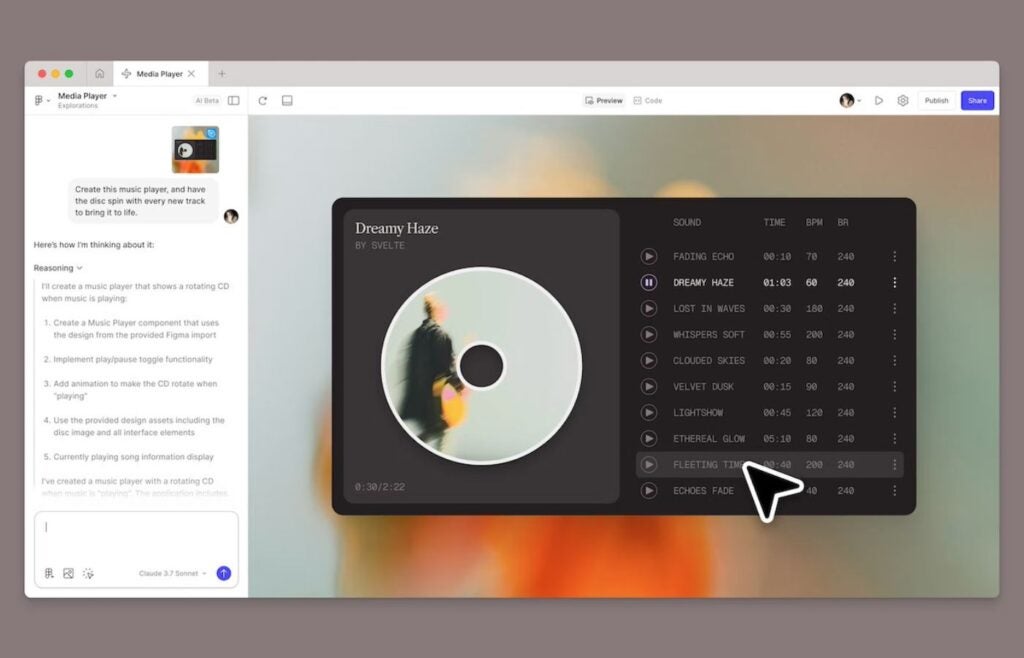

Figma, the popular collaborative design platform, has just introduced a major update that helps designers and product teams build faster. On Wednesday, the company announced Figma Make, an AI-powered feature that turns static designs into working interactive prototypes using simple text prompts.
Figma Make is designed to simplify and speed up the design process. With just a few words, users can ask the AI to build out features, add interactivity, and generate functional code.
The launch follows the rise of “vibe-coding,” as AI coding assistant platforms like Microsoft’s GitHub Copilot, Cursor, and Windsurf build tools that seamlessly turn text prompts into working code. Figma’s advantage is its deep integration with existing design workflows.
How Figma Make works
Figma Make uses Anthropic’s Claude 3.7 Sonnet AI model to convert designs into interactive experiences. Instead of starting from scratch, designers can feed the AI an existing Figma file, and the tool will generate functional code while preserving the original design structure.
Key features include:
- Interactive Prototyping: Turn static screens into clickable demos with animations and real-time feedback.
- Dynamic Data Integration: Test designs with real data, like live charts or user-generated content.
- Responsive Adaptations: Convert a mobile app design into a desktop version with a few prompts.
According to the company’s blog post introducing Figma Make, the goal is to help teams “validate concepts faster, explore directions more thoroughly, and communicate ideas more effectively.” The new feature is built directly into the Figma platform and is currently being tested with users on Figma’s paid plans, which start at $16 per seat per month.
What does this mean for designers?
Some might worry that AI could replace designers, but Figma CEO Dylan Field disagrees. In a recent talk with Y Combinator’s Garry Tan, Field said: “The more time has gone on, the more that I’m confident in a designer’s role — and believe that it’s going to be one of the critical roles in building software in the future.”
The company says Figma Make isn’t about replacing designers; it’s about expediting the process between idea and prototype.
More than just Figma Make
Figma also announced Figma Sites, a feature currently being tested that allows users to turn designs into live websites and will soon support AI-generated code and built-in CMS features. The updates are part of a broader push to make Figma an all-in-one design and development platform.
Other new features include:
- Grid: A responsive layout engine for cleaner, more flexible designs.
- Figma Draw: New illustration tools like shape builder and text-on-path.
- Figma Buzz: A dedicated space for brand and marketing teams to manage creative assets at scale.
With Figma Make and its suite of new features, Figma is staking its claims as more than just a design tool — it’s becoming a full-stack platform for building digital products. As AI reshapes how software is made, Figma’s updates point to a future where design and development move in lockstep, from idea to execution.


